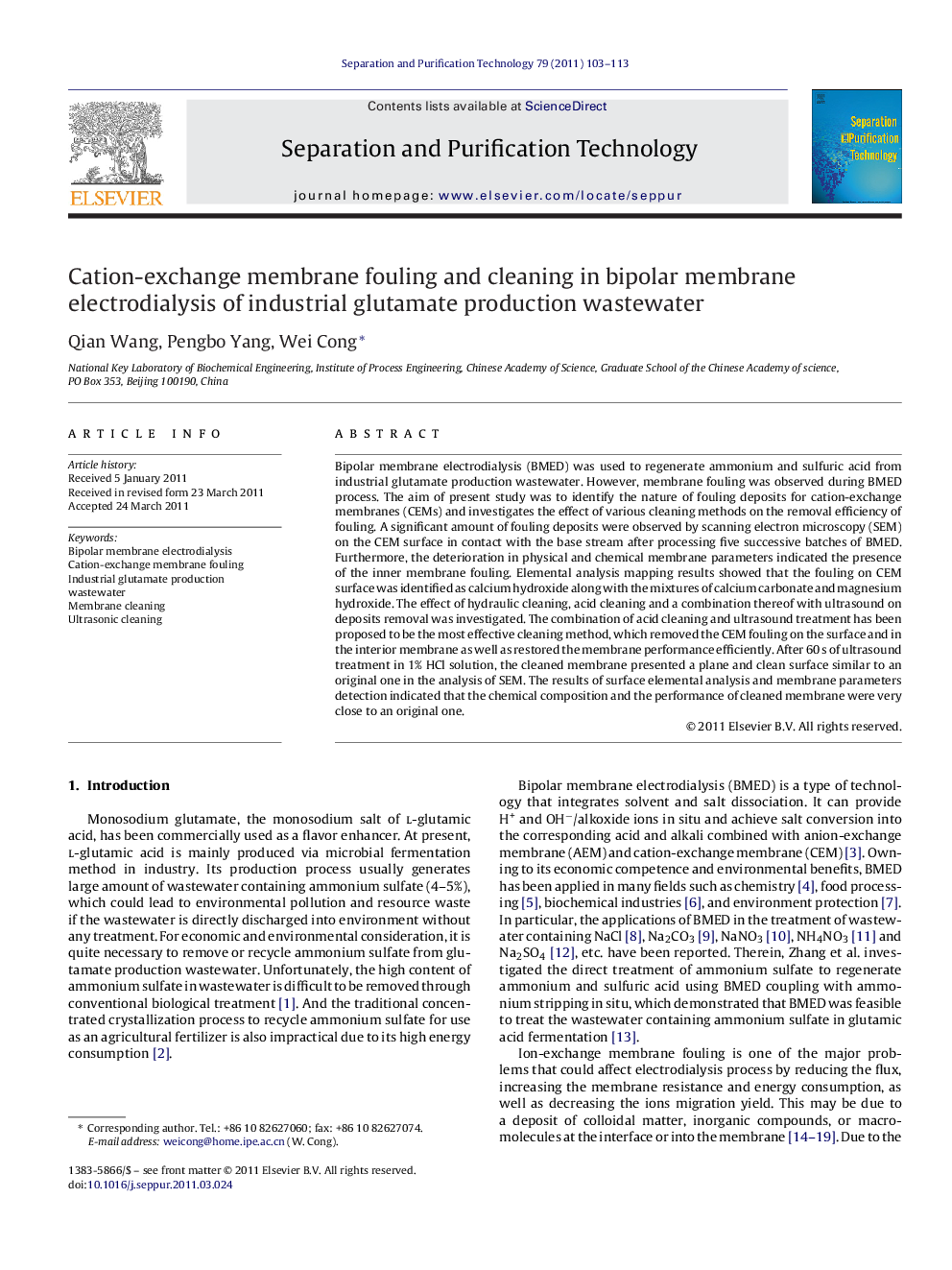| Article ID | Journal | Published Year | Pages | File Type |
|---|---|---|---|---|
| 642688 | Separation and Purification Technology | 2011 | 11 Pages |
Bipolar membrane electrodialysis (BMED) was used to regenerate ammonium and sulfuric acid from industrial glutamate production wastewater. However, membrane fouling was observed during BMED process. The aim of present study was to identify the nature of fouling deposits for cation-exchange membranes (CEMs) and investigates the effect of various cleaning methods on the removal efficiency of fouling. A significant amount of fouling deposits were observed by scanning electron microscopy (SEM) on the CEM surface in contact with the base stream after processing five successive batches of BMED. Furthermore, the deterioration in physical and chemical membrane parameters indicated the presence of the inner membrane fouling. Elemental analysis mapping results showed that the fouling on CEM surface was identified as calcium hydroxide along with the mixtures of calcium carbonate and magnesium hydroxide. The effect of hydraulic cleaning, acid cleaning and a combination thereof with ultrasound on deposits removal was investigated. The combination of acid cleaning and ultrasound treatment has been proposed to be the most effective cleaning method, which removed the CEM fouling on the surface and in the interior membrane as well as restored the membrane performance efficiently. After 60 s of ultrasound treatment in 1% HCl solution, the cleaned membrane presented a plane and clean surface similar to an original one in the analysis of SEM. The results of surface elemental analysis and membrane parameters detection indicated that the chemical composition and the performance of cleaned membrane were very close to an original one.
Graphical abstractFigure optionsDownload full-size imageDownload as PowerPoint slideHighlights► Base stream side of cationic membrane was severely fouled. ► The fouling mainly consisted of Ca(OH)2 along the mixtures of CaCO3 and Mg(OH)2. ► Acid–ultrasound cleaning was the most effective method to remove the fouling.
